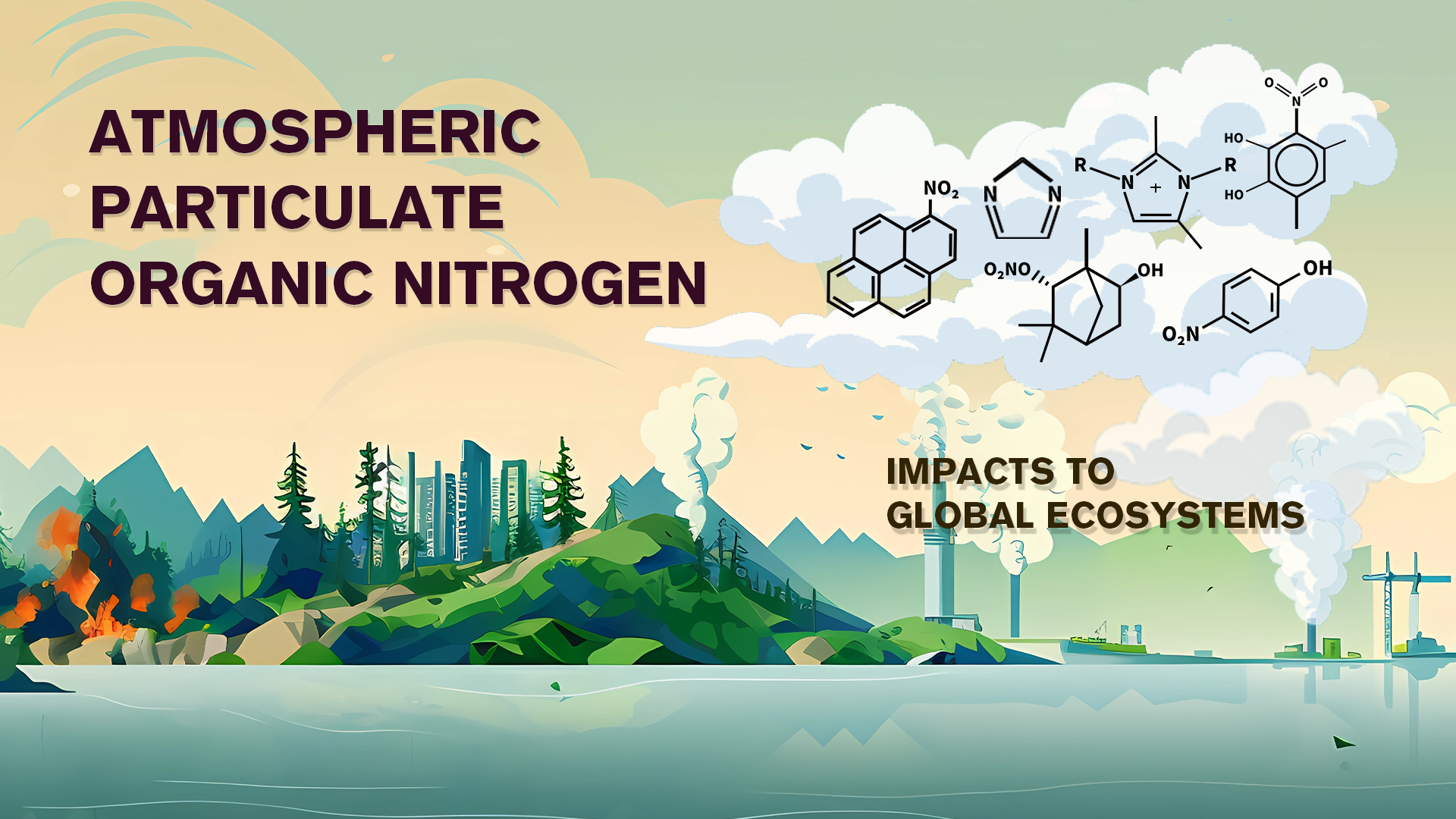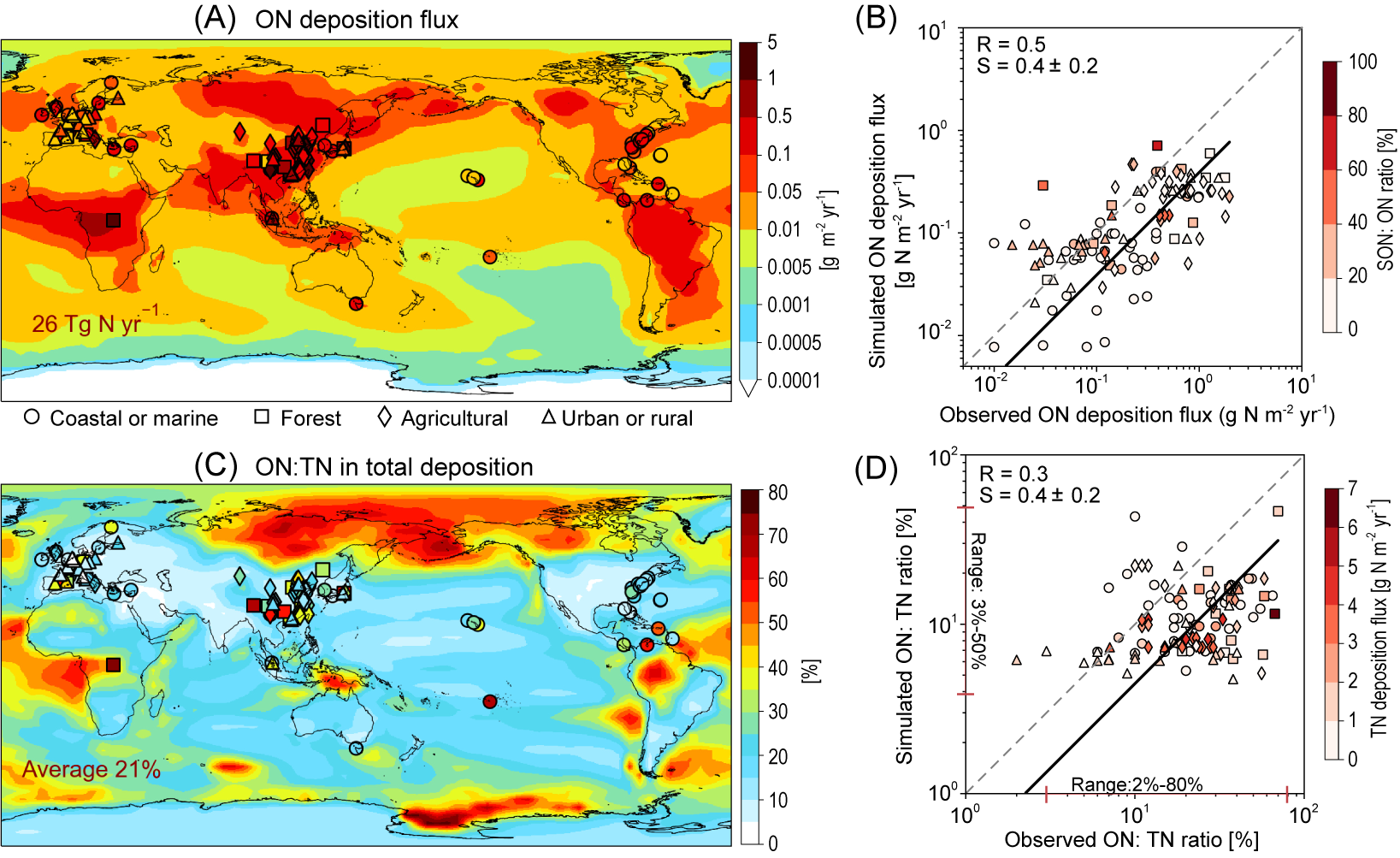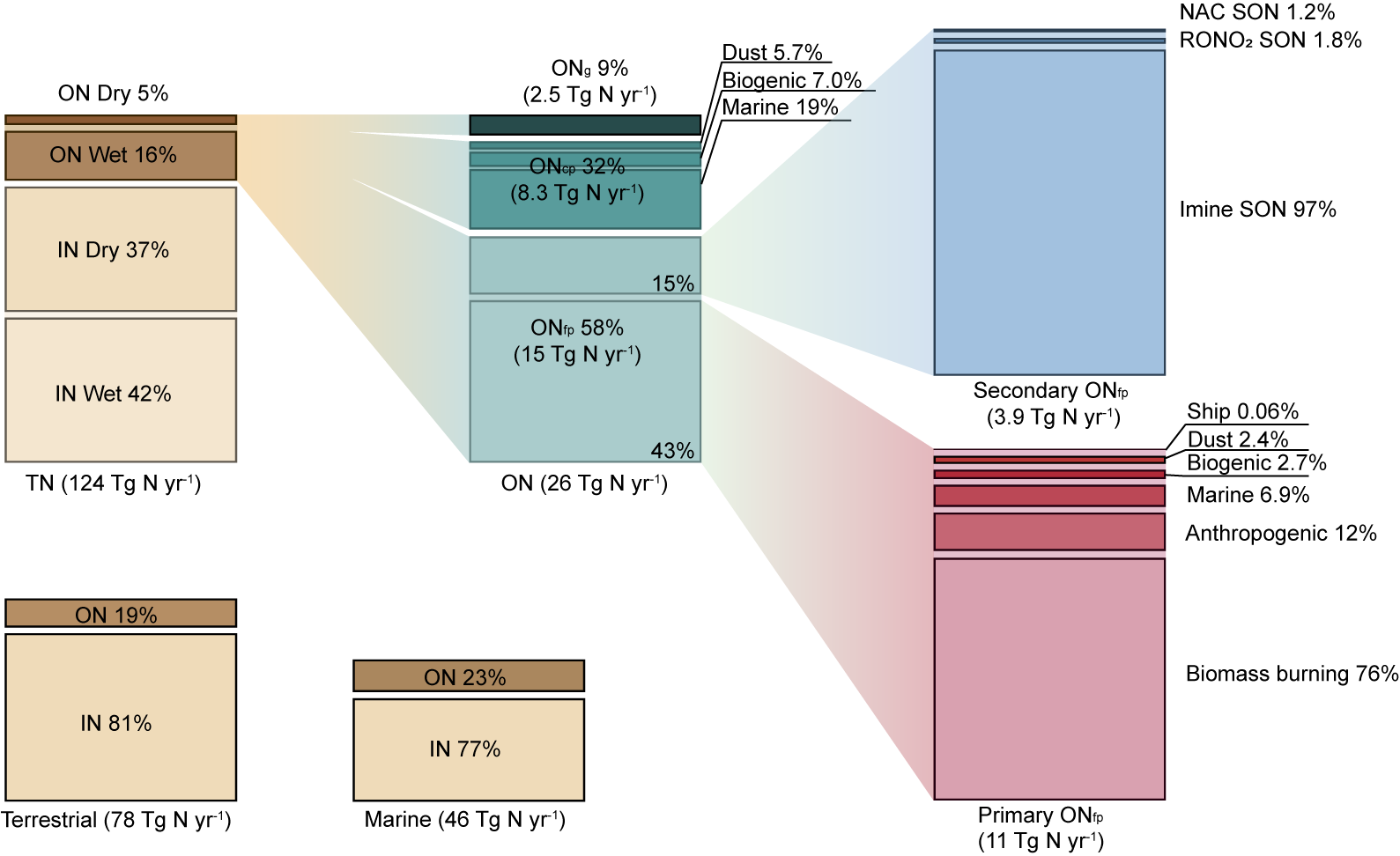Researchers show organic nitrogen aerosol to be important contributor to global atmospheric nitrogen deposition
Atmospheric deposition of organic nitrogen (ON) plays a crucial role in the global nitrogen cycle. Surface measurements showed that 2% to 70% of the local atmospheric deposition flux of total nitrogen was organic. However, previous models have largely neglected the spatial and chemical variations of atmospheric ON, leading to inadequate assessment of its global impacts.

Professor Tzung-May Fu’s research group from the School of Environmental Science and Engineering at the Southern University of Science and Technology (SUSTech) and scientists from the Hong Kong University of Science and Technology (HKUST) recently collaborated to quantify the global budget of atmospheric organic nitrogen (ON) aerosol and its contribution to the global atmospheric nitrogen (N) deposition flux.
Their paper, entitled “Dissecting the contributions of organic nitrogen aerosols to global atmospheric nitrogen deposition and implications for ecosystems”, was published in National Science Review, a leading multidisciplinary scientific journal.
The researchers developed a comprehensive global model of atmospheric gaseous and particulate ON, incorporating the latest knowledge on emissions and secondary formations. Their simulated surface concentrations of atmospheric particulate ON (ONp) were highly consistent with global observations, a feat that had not been achieved previously (Figure 1). Additionally, their simulated atmospheric deposition flux aligned with global observations within an order of magnitude (Figure 2).
Prof. Fu’s group estimated that the global atmospheric ON deposition was 26 Tg N yr-1. The majority of this deposition (23 Tg N yr-1) occurred in the form of ON aerosol and accounted for 19% of the global atmospheric total N deposition (124 Tg N yr-1). The main sources of ON aerosols were wildfires, ocean emissions, and secondary formation (Figure 3).

Figure 1. Observed and simulated global annual mean surface concentrations of atmospheric ON aerosols

Figure 2. Observed and simulated atmospheric ON deposition fluxes and the ratios of ON versus total nitrogen (TN) in atmospheric deposition fluxes
The scientists showed that the deposition of ON aerosol from the atmosphere is a crucial external source of nitrogen to nitrogen-limited ecosystems worldwide, such as the boreal forests, tundras, and the Arctic Ocean. In a future warming climate, wildfires will likely become more frequent and intense. Climate warming will also lead to surface ocean stratification, making atmospheric ON deposition an increasingly important source of nitrogen to these ecosystems. Their research highlighted the need to better understand the environmental impacts of atmospheric ON aerosol and how those impacts respond to climate change.

Figure 3. The global atmospheric total nitrogen (TN) deposition flux and the contributions of different N components as simulated by this study.
Dr. Yumin Li, a graduate of the SUSTech-HKUST joint Ph.D. program, is the first author of this paper. Professor Tzung-May Fu of SUSTech and Professor Jianzhen Yu of HKUST are the corresponding authors.
This work was supported by the National Natural Science Foundation of China (NSFC) and the Guangdong Basic and Applied Basic Research Foundation. Computational resources were provided by the Center for Computational Science and Engineering at SUSTech.
Paper link: https://doi.org/10.1093/nsr/nwad244
